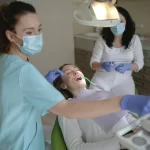The Trend Of Clean Beauty
One of the most valuable but also most misunderstood terms in the care industry is “clean beauty.” Like the word “natural,” clean beauty is not strictly defined by the FDA, and therefore has no production standards or definition that informs potential customers whether an item is clean or not. Nevertheless, products are becoming one of the hottest trends today. They have the ability to make a meaningful positive impact on personal and environmental wellness.
The accompanying infographic explains the term and contributes excellent guidance, tips, and tricks on how to select clean beauty products that are right for you and your daily beauty routine.
As the graphic points out, it has a reasonably simple definition: It means nontoxic. Its products can have natural ingredients, synthetic ingredients, eco-friendly ingredients and preservatives, as long as none of those ingredients are considered toxic. This is an extremely important point, but also leads to confusion for many consumers. We cannot really use terms like clean beauty and natural interchangeably, or believe that all synthetic ingredients are harmful. An ingredient can be both natural and toxic, and a preservative can be synthetic and nontoxic.
The question that generally comes to mind is, which ingredients are toxic and which are nontoxic? Unfortunately, there are many different opinions inside and outside the personal care industry over which toxic ingredients bring the most significant risks, and which nontoxic ingredients offer the most significant advantages for health and wellness. This infographic does an excellent job of presenting a summary to help consumers begin their research into these products. As the resource goes on to clarify, however, consumers must do further research and analysis to get an accurate and stable idea about which products are truly clean beauty.
To learn more about these products and why you should be using them immediately, please read the accompanying resource.










